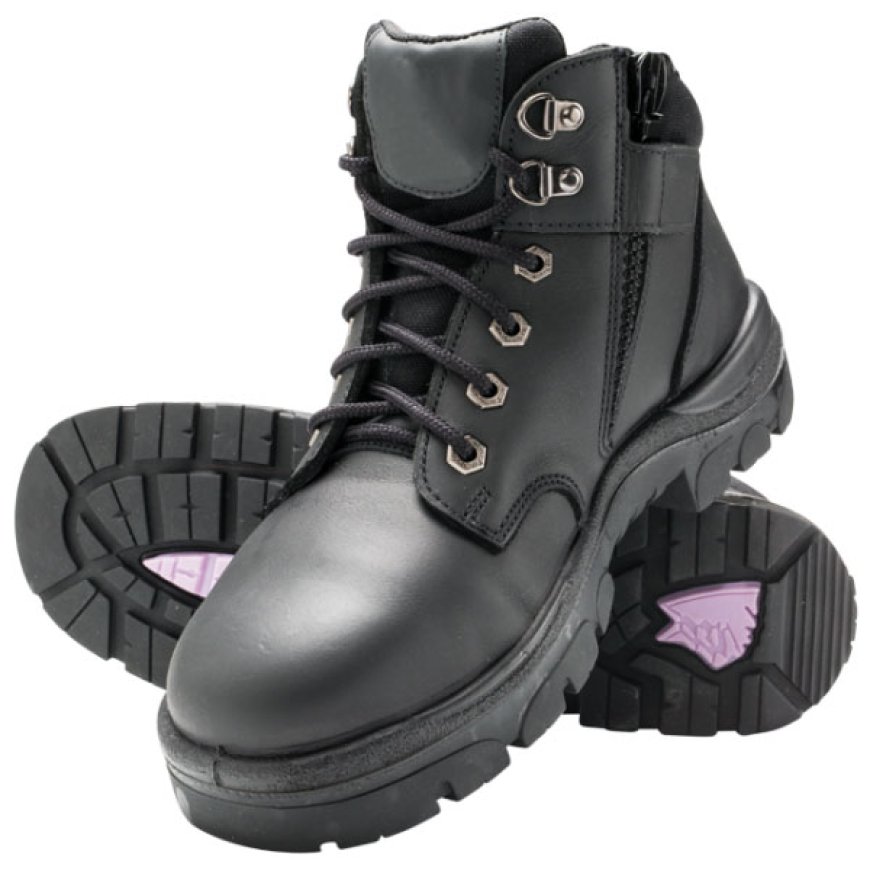Emphasising Workplace SAFETY with Slip-Resistant Footwear

Safety footwear at the workplace might not seem like a topic that will trend on social media, but since poor footwear choice can cause workplace accidents, it is an important consideration.
According to the National Floor Safety Institute (NFSI) based in the US, wearing the wrong footwear is a significant contributing factor in almost 24% of all slip and fall incidents, and failure to identify hazards or improper identification accounts for 9% of slip and fall incidents. Globally, slips, trips and falls are some of the most common causes of work-related injury. In the UK alone, they account for, on average, 40 per cent of all reported major injuries. According to the Health and Safety Executive, in the UK, slips, trips, and falls are, on average, responsible for around a third of all non-fatal major injuries to employees. Ninety-five per cent of major slips result in broken bones, requiring a minimum of six to eight weeks to heal. While the cost to human health is priceless, the cost to employers from lost production and other expenses is estimated at £512 million annually.
Selecting and providing slip-resistant footwear that is most appropriate for the slip hazards, the work environment and the workers who need to wear it can play a big part in preventing slips. Investing in high-quality protective footwear that fits well and is comfortable to wear for extended periods can boost worker wellbeing and productivity.
Here are a few tips on choosing the appropriate safety footwear:
Get the technical specifications right: Footwear plays a big part in preventing slips, but not all shoes are created equal. Buyers are spoilt for choice, but understanding the technicalities will help narrow the selection down. Check for quality safety standards. For example, manufacturers must prove the slip-resistant performance of footwear by carrying out tests in line with the primary safety standard, EN ISO 20345:2011. Footwear that passes the EN test for slip resistance will be marked with codes indicating it has met the specified requirements when tested for specific conditions. In Germany, DIN EN ISO 20345 defines the safety footwear requirements. Standards are sometimes updated. It is, therefore, essential to ensure the manufacturer meets any new specifications for safety footwear. The correct technical phrasing and shoe specifications will get the most protection from a boot against slips and other hazards.
Find the right match for the workplace: When selecting slip-resistant footwear, employers must know the working environment well. Different shoe materials will behave in specific ways depending on their exposure to chemicals and settings. For example, 'oil-resistant' footwear and 'slip-resistant' footwear differ. A label stating 'oil-resistant' may only mean oil will not damage the shoe's soles. Employers should, therefore, identify the main surfaces and contaminants that cause workplace slip risks and seek the supplier's advice on the most suitable footwear for these conditions.
Take a workplace safety risk assessment: Employers should undertake a thorough risk assessment, looking at factors such as the type of contamination that is likely to occur, the types of floor surface present and information on the footwear's slip-resistance properties provided by the manufacturer. It is important to consider the slip-resistance the footwear is likely to provide in the specific circumstances at work. Don't go by the manufacturer's laboratory test results alone.
Avoid skimping on quality: Choosing high-quality footwear is like making a good investment – it gives benefits in terms of comfort, how well they work, and how long they last. For example, having shoes that let the feet breathe and also keep while keeping them dry goes a long way in ensuring comfort. Even though cheaper options might seem like a good idea to save money, better quality shoes usually feel more comfortable and last longer. Check if suppliers offer repair services. Investing in well-made PPE can save money in the long term by reducing the costs of replacing it.
Consider investing in technology: Advancements in technology and fabrics have created puncture-resistant boot midsoles that are lighter, more comfortable and more flexible. For example, nanocarbon makes lightweight toe caps that meet the same standards as steel caps. Incorporating technology makes boots lighter, reducing leg fatigue.
Prioritise employee health: Plantar fasciitis is a common problem associated with safety footwear. The condition causes acute heel pain due to plantar fascia inflammation and is common among workers on their feet for long periods. If left untreated, the condition can worsen, increasing the risk of accidents and injury. However, choosing footwear that incorporates biomechanics can reduce the risk. Footwear that supports the natural curvature of the foot can help the wearer maintain a more natural foot position. This helps reduce
wearer fatigue, especially when boots are worn over long working periods, ensuring better overall bodily posture and minimising long-term injury risk associated with standing for long periods.
Key takeaway: Investing in high-quality footwear can go a long way in preventing slips, trips and falls at work, ensuring worker wellbeing and productivity. However, employers must thoroughly assess their workplace and carefully choose footwear with the optimal slip-resistance qualities, materials and design to mitigate slip and fall hazards.

Suresh Tanwar, Head of Audit and Consultancy - India, British Safety Council







